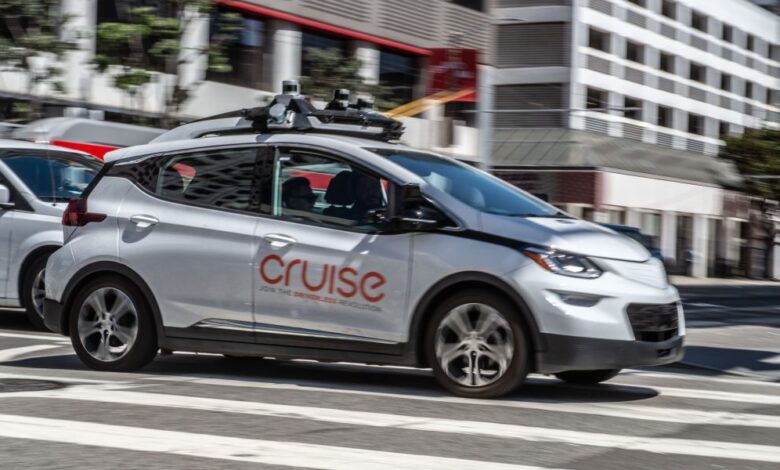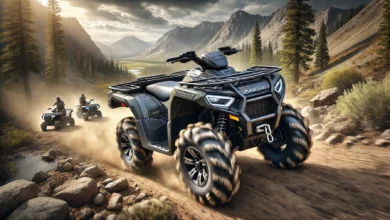
[ad_1]

General Motors Co. blamed poor leadership for mishandling its Cruise robotaxi crisis, an admission the company is hoping will help get its cars back on the roads.
A report by the law firm Quinn Emanuel, which was paid by Cruise, outlines how executives took an adversarial approach with regulators after one of its autonomous cars struck and seriously injured a woman. Federal prosecutors are now investigating the incident, which led Cruise to halt its fleet nationwide and undercut GM Chief Executive Officer Mary Barra’s vision to transform the carmaker from a 20th-century metal bender to a transportation company of the future.
In a Thursday blog post, Cruise said it accepts the conclusions of the report. The company also disclosed that it’s facing probes from the Justice Department and Securities and Exchange Commission. It pledged to work with those investigations, in addition to having more robust processes for working with regulators. Kyle Vogt, former Cruise CEO, did not respond to a text message seeking comment.
“The reasons for Cruise’s failings in this instance are numerous: poor leadership, mistakes in judgment, lack of coordination, an ‘us versus them’ mentality with regulators, and a fundamental misapprehension of Cruise’s obligations of accountability and transparency to the government and the public,” the report said. “Cruise must take decisive steps to address these issues in order to restore trust and credibility.”
The report concludes that Cruise officials didn’t intentionally deceive regulators, but that their initial disclosures were inadequate.
For GM and Cruise, making the report public is a crucial step to getting its robotaxis back on the road. It’s particularly important that the companies repair relations with the state of California, which suspended Cruise’s license to operate driverless vehicles after company officials misrepresented details of the October collision in San Francisco. Within weeks, Vogt resigned, and Cruise fired nine executives and cut almost a quarter of its workforce.
It’s been an embarrassing saga for Barra who has touted its self-driving technology as a key pillar of GM’s plan to double revenue by the end of the decade. She’s pivoted by slashing spending on Cruise to contain losses and announcing plans to return billions to shareholders.
The company faces a hearing on Feb. 6 to determine what it owes in fines to California.
Connectivity Issues
The fateful incident occurred on Oct. 2, when a Cruise vehicle named “Panini” ran over a woman who’d been struck by another car and thrown in front of the self-driving vehicle.
The robotaxi stopped after detecting the person, but incorrectly classified the accident as a side-impact collision and initiated a pullover maneuver with the pedestrian pinned between its wheels. It dragged her 20 feet, causing severe injuries.
Cruise reported the incident to California regulators and the National Highway Traffic Safety Administration, but in early communication with some of the regulators it didn’t disclose that the woman was dragged and only communicated that the car had stopped after hitting her, according to documents reviewed by Bloomberg News.
The report released Thursday found that on Oct. 3 Cruise shared a video of the incident with the San Francisco Mayor’s Office, National Highway Traffic Safety Administration, California DMV and other government officials. In each of those meetings, it intended to play it in full. In some cases, connectivity issues prevented the video from being shown, but the company sent it to regulators in the weeks after those meetings, the report found.
Cruise never verbally pointed out that the woman was being dragged, preferring to let the “video speak for itself,” the report says. Cruise also showed an incomplete video to the media, the report said, because the company was fixated on shifting blame to the human driver that first hit the pedestrian.
“Cruise’s passive, nontransparent approach to its disclosure obligations to its regulators reflects a basic misunderstanding of what regulatory authorities need to know and when they need to know it,” Quinn Emanuel concluded.
Mortifying Move
California’s Department of Motor Vehicles suspended Cruise’s license on the same day GM reported its third-quarter earnings. On a call with Wall Street analysts hours earlier, Barra had touted the business’s potential.
“We do believe that Cruise has tremendous opportunity to grow and expand,” she said. “Safety will be our gating factor.”
California’s move was a huge blow for Cruise, which Vogt had said was on a path to $1 billion in revenue by the end of this year.
Up to that point, Cruise was pushing hard to roll out its robotaxi service outside of the San Francisco market. Vogt was determined to establish operations, customer bases and name recognition across the country before its biggest competitor Waymo did, according to people present at management meetings.
The people, who asked not to be identified describing private deliberations, likened the race to how Uber Technologies Inc. and Lyft Inc. competed in the early days of ride-hailing.
There were signs the technology wasn’t working smoothly before the California authorities took action. One of its cars collided with a Toyota Prius in June of that year. That same month, a bug caused about a dozen Cruise vehicles to all stop in one intersection, blocking traffic for hours.
GM executives, including general counsel Craig Glidden, pressed the startup on whether its processes were robust enough, people familiar with the matter said at the time. There was debate within Cruise about reducing the number of vehicles driving in parts of San Francisco to lower the odds of more incidents.
Vogt dismissed the concerns and pressed on, the people said.
Cruise then tussled this past summer with San Francisco’s city attorney and fire department over more incidents. Vogt told his staff that Cruise had to stand up to regulators the way Tesla Inc. CEO Elon Musk does, two of the people said.
Big Aspirations
Barra had big aspirations for Cruise when she acquired the business for $1.1 billion in early 2016. GM envisioned lowering the cost of rides in driverless vehicles below what Uber and Lyft charged and seizing a share of what former Cruise CEO Dan Ammann said was a $1.6 trillion market.
In a 2017 presentation, Ammann said Cruise would marry Silicon Valley software with Detroit manufacturing chops that Waymo lacked. The company later unveiled an electric shuttle called Origin that was purpose-built to be a robotaxi, and Cruise hoped to run a service by the end of 2019.
“We think it will change the world,” Ammann said at the time.
Cruise managed to land multibillion-dollar investments from the SoftBank Vision Fund, Microsoft Corp., Honda Motor Co. and T. Rowe Price As of early 2021, the business was valued at around $30 billion.
Those ambitions have since been scaled back. GM bought the Vision Fund out of its investment two years ago and has halted production of the Origin. Honda’s CEO suggested this month that it’s unlikely to launch a service with Cruise in central Tokyo by early 2026 as planned.
Barra’s team still believes Cruise has good technology and plans to re-establish the business — with tighter control. Before October, GM wanted to give the company independence to maintain a startup culture, said people familiar with the matter.
That’s no longer the case. Glidden, the general counsel, has been named the self-driving company’s co-president, Barra is non-executive chair and GM board member Jon McNeil is vice chairman of Cruise.
GM’s shares rose 1.3% Thursday in New York.
— With assistance from Dana Hull
Source link




